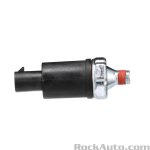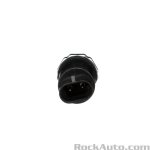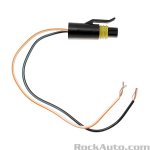I installed an MSD module and coil (remote) in my Trans Am and it was like a different car afterward. It would actually pull above five grand. Of course, that was after a few OE modules failed. I changed more ignition modules in that one car than in all my Mopars combined, but in fairness only 55 or 60 of the Mopars actually ran (the rest were parts cars). I've never had a factory ECU fail, nor a ballast resistor. I've also run engines well over 7 grand on stock Mopar parts, something absolutely unfathomable with an HEI.
The OE HEI system falls off in performance above 4,000RPM (really falling apart around 4,800) due to its fixed dwell and voltage. Two things affect spark intensity: voltage input and dwell. That's why HEI is so voltage-dependent: it's got fixed dwell and the resistance to the coil is internal to the module (it has a "ballast resistor" so to speak). Unlike GM, Chrysler understood how ignition actually works and designed their system to perform--something GM cared nothing about in the smog era when HEI debuted. In the Chrysler system, the ballast resistor is a variable voltage controller. Like the GM system, the Mopar uses a fixed dwell setting. However, unlike the bargain-basement halfwits at the General, Chrysler realized that if they varied the voltage with RPM, the spark intensity could actually increase with RPM. As RPM increases, the ballast resistor has less cooling time betwixt spark events. As it gets hotter, its resistance decreases. As its resistance decreases, more voltage makes it through to the coil. Same dwell interval x greater voltage = more spark energy. End of statement.
It was a genius idea with points that continued to be brilliant with a reluctor.
Now, compare the sizes of the two modules. The Chrysler one is enormous compared to the HEI. Why? Reliability. Remember, Chrysler offered a 5-year/50,000-mile warranty starting back in '63. The less they had to honor it, the more profitable they'd be. In the case of the module's size it's all about cooling, particularly with the enormous, extremely robust TO-3 case transistor that controls the dwell. The Chrysler system has greater dwell time, which means more heat through that transistor. That big transistor dissipates it well into the huge heatsink to which its bolted. The case bolts to the firewall for further heat transfer (and later, grounding). Cooler electronics simply last longer. The TO-3 wasn't chosen because it was the only thing available; it was simply the most proven, most reliable style of transistor available. They're still available and still used in high-power-demand situations where space is not a concern.
Here's the fun bit: The "HEI makes more power" pipe dream comes from the same people that buy Edelbrock Performer intakes for their 340 and claim it makes more power, even though factory 360 EGR intakes are easily proven better on the dyno. If nothing else changes, your "butt dyno" will feel a mild increase in lower-range power in either case. In the case of the Edelbrock, it's due to smaller ports than OE providing greater port velocity at low speed (and hence, falling on its face up high). In the case of HEI, it's due to the fact that you've got all the spark power you're ever gonna get while tooling around at cruise. The reality of it is that timing is far more important at lower cylinder pressures. 35kV is more than enough to light the fire. These are the same dunderheads running their engine using the base timing on the engine decal--a number the engineers determined fully expecting you and five of your closest homies to drive up Pike's Peak on shit fuel whilst pulling a 3-ton Airstream. The OE 340/4-speed timing decal for 1969 says 0° (at TDC). With the same compression, base timing on Agnes is set at 22°BTDC. I have neither an Airstream nor five friends.
HEI on Mopars is an internet-era thing, and like so many other things on the internet it's nothing more than parroted stupidity begun by GM guys who bought a Chrysler product.
An HEI coil will not provide any more spark than your Blaster II. If you were using the original coil, it would be a different story. The Blaster II should last longer than the HEI unit, due to being oil-filled and hence staying cooler. It's also less voltage-sensitive than an e-coil, which probably works to your advantage since I doubt you're getting a rock-solid 14.7V from your alternator.
Realistically, Jester, in your case the system you have will probably be fine for years. You have a low-performance engine that couldn't hit five grand without nitrous, that rarely sees even 3,000RPM. If you were to swap in a mildly-hotted V8, though, your new ignition system would become both a liability and a handicap. As someone who spent years with both ignition systems--remember, I ran Pontiacs--the Chrysler has proven itself infinitely more reliable from mild to wild.
For me, the argument is purely academic. Agnes will be my only vehicle with a distributor in the foreseeable future; both the Challenger and Imperial will have fully-programmable distributorless ignition. Hell, I might even swap Agnes if she sticks around long enough.
Before anyone asks, Agnes currently has a Pertronix Ignitor III purely for stealth reasons. It has an onboard rev limiter so there's no external module of any sort, nor any telling new holes in the firewall. To the casual observer it looks like I'm still running points. We'll find out together how it all pans out in the long run, but based on my experience Ignitors are, if nothing else, extremely reliable.






